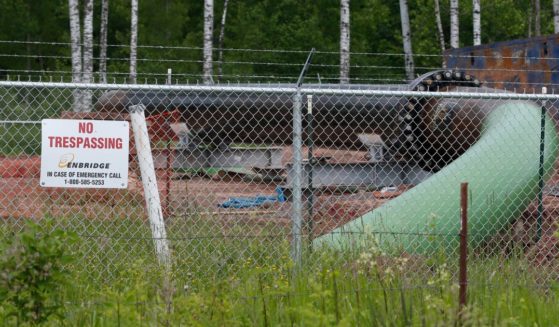Megadrought Expands Into America's Breadbasket: Hot Dry Conditions Headed to Heartland
Scientific researchers and a federal agency are putting out a warning that much of the U.S. faces hot, dry conditions this summer.
The country’s grain-producing heartland will be at the eastern edge of the conditions that have plagued California and other Western states since the summer of 2020, according to the National Oceanic and Atmospheric Administration’s Spring Outlook.
In the big picture, this summer continues 22 years of what experts say is the worst megadrought in North America since about 800 A.D., according to a study in the journal Nature Climate Change, which cited an analysis of tree rings.
A “megadrought,” as The New York Times reported in a report in April of last year, is a period when drought conditions last for decades, not simply a year or even several years.
It’s what the Western part of the country is already experiencing.
“It’s a slow-motion train wreck,” Jason Smerdon, one of the study’s authors and a climate scientist at Columbia University, told NBC.
“What we showed in the paper is that increasing temperatures in the Southwest contributed about 42 percent to the severity of this drought,” he said.
In studying North America from southern Montana to northern Mexico, and from the Pacific Ocean east to the Rocky Mountains, the researchers found multiple megadroughts have taken place since 800 A.D., with the last one taking place in the late 1500s. Some lasted up to 30 years.
California, 5th largest economy in the world, prepares for a 3rd straight drought year. NOAA forecasts above-average temps from the Desert Southwest to the East Coast & north through the Midwest to the Canadian border during April-June.#ClimateCrisis
https://t.co/zVs0y9w9xZ— Fin FoxGuy – #VotingRights (@FinFox2) March 19, 2022
A. Park Williams, a climate scientist at the University of California, Los Angeles, told NBC there does not appear to be an end in sight.
“Twenty-two years in, some of these big megadroughts in the past were starting to peter out,” he said.
“This drought is not petering out. Instead, it’s in full swing and is as strong now as it ever was before.”
He said the impact of this drought may be far-reaching.
“When you have worse and worse droughts that are closer and closer together, there’s just no time to recover,” Williams said.
New Seasonal Drought Outlook by @NOAA’s @NWSCPC takes us into summer.
With a few exceptions, drought is expected to improve east of the Mississippi River and persist or develop west of the Mississippi.
This will be the third summer in a row with much of the West in drought. pic.twitter.com/KtNaWgI4QO
— NIDIS Drought.gov (@DroughtGov) March 17, 2022
NOAA’s U.S. Spring Outlook makes it clear that drought weather will reign supreme.
“Severe to exceptional drought has persisted in some areas of the West since the summer of 2020 and drought has expanded to the southern Plains and Lower Mississippi Valley,” Jon Gottschalck, chief, Operational Prediction Branch, NOAA’s Climate Prediction Center, said.
“With nearly 60 percent of the continental U.S. experiencing minor to exceptional drought conditions, this is the largest drought coverage we’ve seen in the U.S. since 2013.”
Truth and Accuracy
We are committed to truth and accuracy in all of our journalism. Read our editorial standards.












